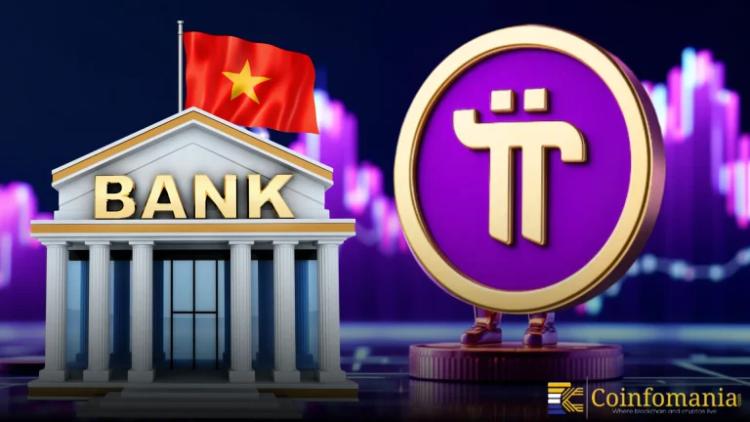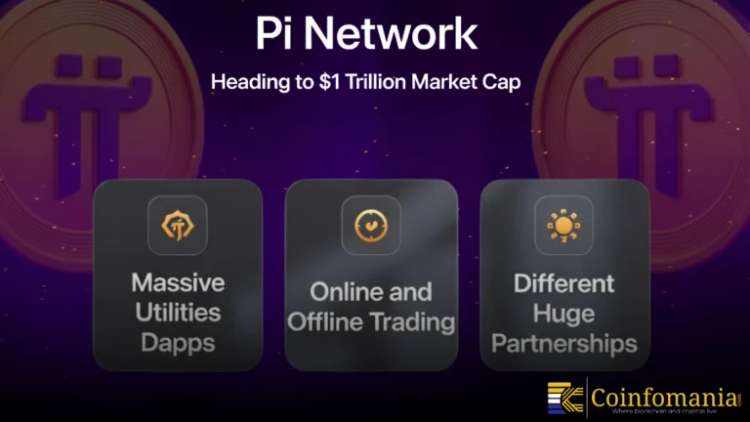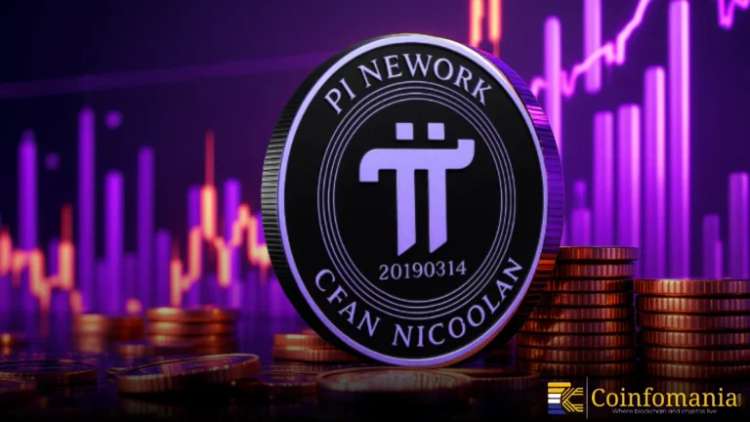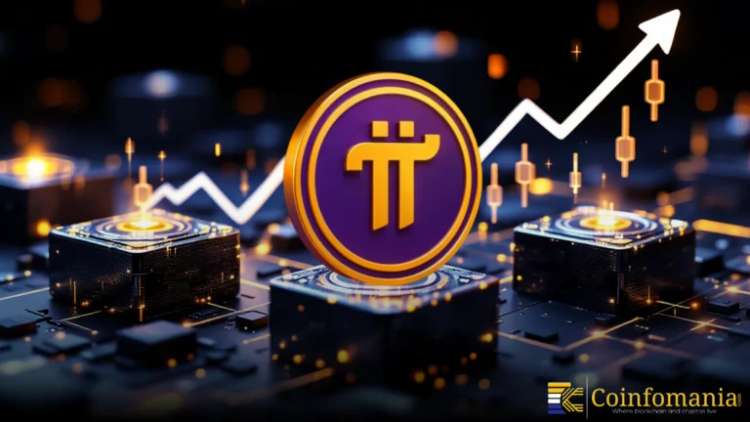Pi Coin Price
Cryptocurrencies are no longer just digital curiosities because several cryptocurrencies are now an intrinsic part of mainstream technology and investment landscapes. Among them, Pi Network is one of the latest crypto projects that has gained more attention. This creative network is unique from other networks as it mainly focuses on enhancing accessibility and user-friendly mining to its users. Are you new to the crypto world? Wondering what exactly the Pi Network is? Here, we have enlightened everything about Pi Network. Without any ado, let's delve into the world of Pi Network and explore its real-time utilities, fundamental capabilities, and more.
What is the Pi Network?
The Pi Network is a blockchain-based decentralized crypto platform. It is the mobile-first crypto project launched by Stanford Ph. D. Dr. Chengdiao Fan and Dr. Nicolas Kokkalis in the year 2019. Here, users can mine its native currency, Pi coin, through the mobile application without requiring specialized hardware or technical expertise. Further, with its breakthrough tech, this decentralized web3 initiative provides a seamless Pi mining experience for users from mobile phones without consuming more battery power.
How Does the Pi Network Work?
Bitcoin and other traditional crypto assets require expensive equipment and energy-intensive mining operations. But Pi coin can be earned by mining on the mobile application, opening the application once a day, and verifying your presence. This creative approach makes Pi coin the most accessible cryptocurrency for newbies.
Pi Coin Vs. Bitcoin
Bitcoin requires powerful computers to mine because it costs a considerable amount. The Pi coin doesn't require computationally high-cost devices to mine Pi coins. A mobile application is enough to get started with the Pi mining process. Further, Bitcoin relies on a Proof-of-Work mechanism to validate transactions. However, Pi uses the Stellar Consensus model.
Technology Behind Pi Network
The core technology behind the Pi Network’s success is its consensus algorithm. A consensus algorithm is a special component that every blockchain-based cryptocurrency employs in its network. It ensures that every transaction made on the blockchain network is secure and valid. The top dominants, Bitcoin, employ the Proof-of-Work algorithm, and Ethereum employs the Proof-of-Stake algorithm. Similarly, the Pi Network employs an algorithm called "Stellar Consensus Protocol".
What is the Stellar Consensus Protocol?
Stellar Consensus Protocol is an adaptation of FBA (Federated Byzantine Agreement). Professor David Mazieres at Stanford University developed it. Initially, this protocol was created for the Stellar Network. The Pi Network creators chose to employ it in their creative blockchain as it offers high scalability, energy efficiency, and secure transactions.
SCP Key Features
- Decentralized Node: Stellar Consensus Protocol (SCP) maintains decentralization by relying on the network nodes.
- Energy Efficiency: Compared to traditional blockchains' consensus protocol, SCP makes Pi Network an eco-friendly user platform.
- High Security: In the crypto world, security is essential while making transactions. Since SCP is employed in Pi Network, it offers strong security to the traders and prevents malicious attacks.
Is Pi Coin a Good Investment in 2025?
As the market sentiments of Pi Coin remain unreliable, its future prospect is unpredictable at the moment. Hence, its investment potential is uncertain compared to the other crypto coins SOL, ADA, and more. If you are still looking to invest in Pi, then you should consider some of the key strategies before you dive in.
Pi Coin’s Investment Strategies
Whether you are looking to invest in Pi or any other crypto assets, then you should fill your mind with potential risk-management strategies as follows:
- Market Analysis: Before investing, traders should always monitor the price movement of the respective coin on the daily chart. Moving Average Crossovers and the Relative Strength Index (RSI) can help determine whether the price trajectory demonstrates Buy or Sell momentum in the volatile market.
- Never Invest in One Coin: If you plan to invest in crypto assets, never fund all your investments in one token. Diversify your crypto portfolio by investing in many different tokens.
- Dollar-Cost Averaging: A small recurring purchase on a scheduled period.
- Use Safe Storage: Always store your crypto assets in a reputable, regulated hardware or software wallet.
- Understand the Technology: Every crypto project has a different underlying technology for growth. Before making an informed decision, know how the blockchain works and whether it employs smart contracts and consensus algorithms.
Pi Coin’s Legal and Regulatory Concerns
Since its launch, Pi Network has captivated tens of millions of users globally due to its free mobile mining model. Chinese users are no exception. On February 20, 2025, Pi Mainnet was launched, which lightened the potential risks from a legal perspective. Further, investing in Pi coins leads to multiple national regulatory frameworks. Let's delve into the legal risks in certain regions.
China's Legal and Regulatory Framework
China's crypto regulation is stringent, and investing in Pi Coin could lead to:
- Risks of Pyramid Schemes and Illegal Fundraising
- Virtual Currency Trading Ban
- Data Privacy and Security Compliance
US and EU Legal and Regulatory Risks
Though Pi Network is registered in the US and has excluded users from the EU and the US, it still involves following legal risks
- US Securities Law and Fraud Risks
- KYC Compliance
- Data Privacy Risks
How to Buy and Trade Pi Coins?
Looking to buy Pi Coins? Don't know where to begin your investment journey? There are several ways to purchase and trade Pi Coins in the marketplace. Some of the most reliable options are explained below.
How to Buy a Pi Coin?
Pi Coin is listed on selective exchanges like CoinDCX, OKX, and Budget. All you need to do is, install any of these applications, complete your KYC and fund it to purchase Pi Coins.
How to Trade Pi Coins?
As Pi Network launched its Mainnet on February 20, 2025, after years of waiting, Pi Coin miners can finally sell it and cash out. How? Traders can trade Pi Coins on crypto exchanges and P2P platforms. Significantly, trading Pi Coins on reputable centralized exchanges is one of the easiest and safest ways for beginners.
Best Exchanges to Trade Pi Coins
Based on deep research, we have found some of the best crypto exchanges to trade Pi coins are:
- Bitget
- Gate.io
- CoinDCX
- BitMart
- OKX, and more!
Note: Currently, Pi Network costs $0.01 as its transaction fee.
Pi Wallets and Securities
The Pi wallet is one of the crucial components of the Pi Network ecosystem. It is the primary tool and helps manage and secure your Pi Coins. Pi Wallet is designed to be a user-friendly and accessible wallet for Pi holders. The unique feature of this crypto wallet is its low transaction fees. To get started with Pi wallet:
- Download and install the Pi application on your mobile device.
- Generate the wallet by following the on-screen instructions
- Unique passphrases will be provided, which are key to securing your tokens.
- Back up your key. If you lose or share with anyone, you may lose all your Pi assets in your Pi wallet.
How to Secure Your Pi Holdings?
Looking for a secure wallet to store your Pi Holdings? Many crypto wallets can be found online. However, not all wallets are reliable and secure. Only a few build trust among the traders. Some of the convenient and more secure wallets for holding Pi Coins are:
- Trust Wallet
- MetaMask
- Ledger
Two types of wallets that are accessible: Custodial Wallets and Non-Custodial Wallets. A Custodial Wallet is where a third party holds your private keys. On the other hand, a Non-Custodial Wallet is where you can take complete control of your funds using your private key.
Pi Network Adoption and Use Cases
Despite regulatory concerns, Pi Networks' Pi Coin is gaining global adoption. One reason behind the mass adoption is Pi Coin's key partnership and collaboration with BYDFi (a leading digital assets exchange). Other reasons might be its real-time use cases.
Use Cases of Pi Coins
- Peer-to-Peer Transactions
- Merchant Payments
- Decentralized Applications (dApps) within the Pi ecosystem
Innovative Pi Ecosystem
Pi Network centers four key roles to empower its innovative ecosystem.
- Pioneer - Verify your presence on the mobile app regularly
- Contributor - Builds Security Circles
- Ambassador - Invites new investors to grow the ecosystem
- Node Operator - Runs validation software on your system.
Pi Future Outlook and Growth Potential
Pi Network is preparing for a significant transition to the open network phase. This transition will enable connectivity with external blockchains and allow us to trade Pi coins freely beyond the Pi ecosystem. Hence, it has potential in the future.
Pros and Cons of Pi Network
Pros
- Low transaction fees
- Unique mining experience via mobile device
Cons
- Regulatory concerns
- Lack of full blockchain integration
- Liquidity
Final Thoughts
The transition to an open Mainnet and listing on the regulated exchanges has strengthened Pi Networks' credibility. Based on today's Pi Network price analysis, it is evident that Pi price movement is suggesting a robust bearish momentum. Currently, the Pi coin is trading at $1.7760. As it showcases downtime, we suggest monitoring the key levels and investing when the price increases. Before investing in any crypto coins, we recommend that readers do deep market research to understand the risks and rewards and make an informed decision.
Latest News in PI

Pi Wallet Fiat Off-Ramps and DEX Integration Fuel New Narrative
Pi OpenMainnet 2025 drives a loud message. According to the community, the definition of success is not speculative, but usable. The post contends that Pi will come to an actual breakthrough when users are able to sell Pi itself and get funds in their bank accounts using the Pi Wallet. This vision derives emphasis on […]
Triparna Baishnab
Author

Pi Network Prepares Testnet2 v23 Upgrade as Wallet Maintenance Begins
Shweta Chakrawarty
Author

Pi Network Promoters Renew $100 Hype as Price Struggles
Triparna Baishnab
Author

Pi Network Sees 10x Node Growth as Smart Contracts Go Live
Shweta Chakrawarty
Author

Pi Network’s Hidden Ecosystem Signals a Much Bigger Mainnet
Triparna Baishnab
Author